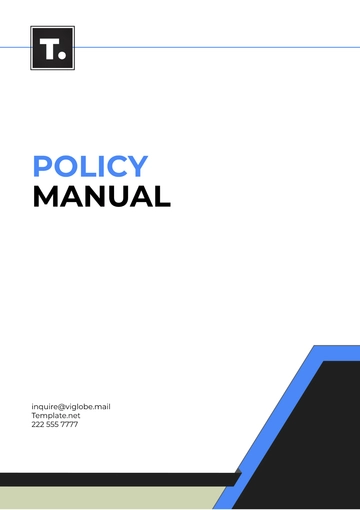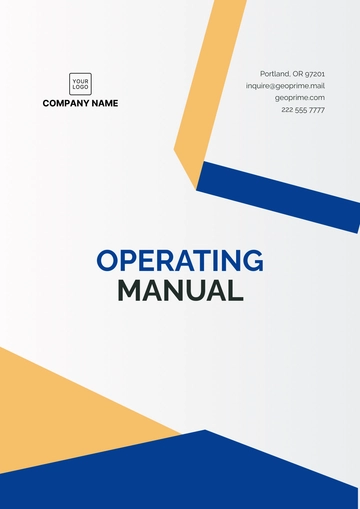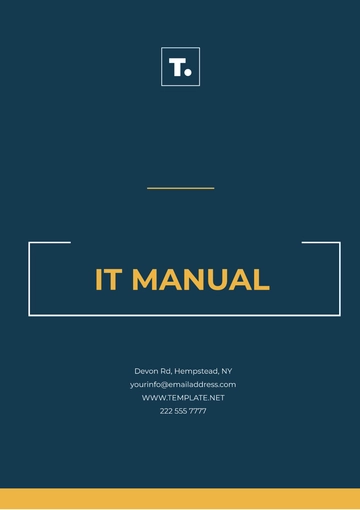Free Finance Credit Training Manual

Introduction to Finance Credit
A. Overview of Finance Credit
Finance credit is a critical component of modern financial systems, facilitating economic activities by allowing individuals and businesses to access funds for various purposes. At its core, finance credit involves the extension of financial resources with the expectation of future repayment. This section provides a comprehensive overview of the fundamental concepts surrounding finance credit.
Definition: Finance credit refers to the provision of funds or resources by one party (creditor) to another (debtor) with the understanding that the debtor will repay the borrowed amount, often with interest, over a specified period.
Importance: The efficient functioning of financial markets relies heavily on the availability and responsible use of credit. Individuals can leverage credit to make significant purchases, while businesses use credit to fund expansion and operations.
Key Players: The finance credit ecosystem involves various entities, including banks, credit unions, financial institutions, and credit rating agencies. Understanding the roles of these players is crucial for a comprehensive grasp of finance credit.
B. The Role of Credit in Financial Markets
Credit plays a pivotal role in facilitating economic transactions and fostering growth within financial markets. This subsection delves into the multifaceted functions of credit within the broader financial landscape.
Liquidity Enhancement: Credit provides liquidity to individuals and businesses, allowing them to access funds when needed, even if their current financial resources are limited.
Risk Management: The extension of credit involves an inherent level of risk. This section explores how credit risk is managed by financial institutions through credit scoring, collateral, and risk mitigation strategies.
Economic Expansion: By enabling access to funds, credit supports economic expansion and development. Businesses can invest in new ventures, and individuals can make significant purchases, contributing to overall economic growth.
Illustrative Example: Consider an individual seeking a mortgage to purchase a home. The availability of credit in the form of a mortgage allows the individual to acquire a property, fostering homeownership and stimulating the real estate market.
Key Concepts in Credit Management
A. Credit Score and Reporting
A crucial aspect of credit management is the evaluation of an individual's or entity's creditworthiness, often represented by a credit score. This subsection delves into the intricacies of credit scoring and reporting mechanisms.
Credit Score Definition: A credit score is a numerical representation of an individual's creditworthiness, based on their credit history, outstanding debts, payment history, and other financial behaviors. Higher credit scores generally indicate lower credit risk.
Credit Reporting Agencies: Explore the role of credit reporting agencies in compiling credit information and generating credit reports. Common credit bureaus include Equifax, Experian, and TransUnion.
Factors Influencing Credit Scores: Detail the various factors that contribute to the calculation of credit scores, such as payment history, credit utilization, length of credit history, types of credit used, and new credit.
B. Creditworthiness Assessment
Assessing creditworthiness is a critical step in the credit management process. This subsection provides insights into the factors considered when evaluating an individual's or entity's creditworthiness.
Income and Debt Ratio: Evaluate the importance of income levels and debt-to-income ratio in determining an individual's ability to manage and repay credit obligations.
Collateral and Guarantors: Explore how the presence of collateral or a guarantor can enhance creditworthiness by providing additional security for the creditor.
Credit Scoring Models: Discuss different credit scoring models, such as FICO scores, and how they are utilized by financial institutions to assess credit risk.
Practical Application: Consider a scenario where a bank assesses the creditworthiness of a small business applying for a loan. The evaluation involves analyzing the business's financial statements, cash flow, and overall financial health.
Types of Credit Instruments
A. Loans
Loans represent a fundamental form of credit extended by financial institutions to individuals and businesses for various purposes. This section explores the diverse landscape of loans, each tailored to meet specific financial needs.
Personal Loans: Personal loans are unsecured loans granted based on the borrower's creditworthiness. Individuals often use personal loans for emergencies, debt consolidation, or other personal expenses.
Mortgages: Mortgages are secured loans specifically designed for real estate purchases. This subsection delves into the intricacies of mortgage financing, including down payments, interest rates, and repayment terms.
Business Loans: Businesses frequently rely on loans to finance operations, expansion, or specific projects. Discuss the different types of business loans, such as term loans, lines of credit, and Small Business Administration (SBA) loans.
Illustrative Example: Imagine a small business seeking a loan to expand its operations. The business might opt for a term loan to finance equipment purchases or a line of credit to manage working capital needs.
B. Credit Cards
Credit cards are widely used financial tools that provide users with revolving credit lines. This subsection details the features of credit cards and explores their distinct characteristics compared to other credit instruments.
Credit Limit and Revolving Credit: Explain how credit cards offer a predefined credit limit, and users can borrow against this limit repeatedly. Emphasize the importance of responsible credit card usage.
Interest Rates and Fees: Discuss the various fees associated with credit cards, including annual fees, late payment fees, and interest rates. Illustrate how understanding these fees is crucial for effective credit management.
Rewards and Incentives: Many credit cards offer rewards programs and incentives. Explore how these features can benefit cardholders while underscoring the need to manage credit responsibly to maximize rewards.
Practical Application: Consider an individual using a credit card for everyday purchases. Analyze how responsible credit card usage can positively impact their credit score and financial well-being.
Credit Risk Management
A. Identifying Credit Risks
Identifying potential credit risks is a critical aspect of effective credit risk management. This section outlines the key steps and considerations involved in recognizing and assessing credit risks.
Credit Risk Factors: Enumerate the factors contributing to credit risk, including economic conditions, industry trends, borrower financial health, and external events. Stress the dynamic nature of credit risk.
Credit Scoring Models: Discuss how credit scoring models aid in evaluating the creditworthiness of individuals or entities. Explore the role of predictive analytics in assessing future credit behavior.
Portfolio Diversification: Introduce the concept of portfolio diversification as a strategy to mitigate concentration risk. Explain how spreading credit exposure across different assets or borrowers can enhance risk management.
B. Mitigating Credit Risks
Once identified, credit risks need to be actively managed and mitigated. This subsection provides insights into various strategies and tools employed to minimize credit risks.
Collateral and Security: Explore how requiring collateral or security for certain loans can mitigate credit risks by providing a source of repayment in case of default.
Credit Insurance: Discuss the role of credit insurance in protecting creditors from losses due to borrower default. Explain how credit insurance functions and when it may be advisable.
Monitoring and Surveillance: Emphasize the importance of ongoing monitoring and surveillance of credit portfolios. Implementing effective monitoring mechanisms allows for timely identification of potential issues.
Illustrative Example: Consider a bank extending a business loan to a manufacturing company. The bank may employ credit scoring models, analyze the industry's economic conditions, and require the company to provide collateral to mitigate potential risks.
Credit Regulations and Compliance
A. Regulatory Framework
Understanding the regulatory landscape is paramount for effective credit management. This section provides an overview of the key regulations governing credit activities and their implications for financial institutions.
Consumer Protection Laws: Explore laws such as the Truth in Lending Act (TILA) and the Fair Credit Reporting Act (FCRA), emphasizing their role in protecting consumers' rights and ensuring transparency in credit transactions.
Anti-Money Laundering (AML) Regulations: Discuss how AML regulations aim to prevent financial institutions from being used for money laundering activities, underscoring the importance of due diligence in customer identification.
Usury Laws: Explain usury laws that regulate the maximum interest rates that lenders can charge, ensuring fair and ethical lending practices.
B. Compliance Practices
Achieving and maintaining compliance with credit regulations is crucial for financial institutions. This subsection outlines best practices and strategies for ensuring adherence to regulatory requirements.
Compliance Monitoring: Detail the process of regularly monitoring and assessing the institution's compliance with relevant credit regulations. Highlight the significance of internal audits and reviews.
Employee Training: Emphasize the role of ongoing employee training programs to keep staff informed about regulatory changes and ensure that they are equipped to handle credit transactions within legal frameworks.
Documentation and Record-Keeping: Stress the importance of thorough documentation and record-keeping to demonstrate compliance with regulatory requirements. Provide examples of essential documents for compliance purposes.
Practical Application: Consider a scenario where a financial institution updates its credit policies to align with new regulatory requirements. The institution conducts employee training sessions and implements enhanced documentation processes to ensure compliance.
Credit Application Process
A. Application Documentation
The credit application process involves gathering essential documentation to assess an individual's or entity's creditworthiness. This section details the necessary documents and information required for a comprehensive credit application.
Personal Information: Specify the personal details needed, including full name, address, social security number, and contact information.
Financial Statements: Discuss the importance of financial statements, including income statements and balance sheets, in providing insights into the applicant's financial health.
Credit History: Explain the significance of obtaining credit reports to assess the applicant's credit history and determine their creditworthiness.
B. Credit Approval Process
Once the application is complete, the credit approval process comes into play. This subsection outlines the steps involved in evaluating and approving credit applications.
Credit Analysis: Describe how credit analysts assess the applicant's financial information, credit history, and other relevant factors to determine their creditworthiness.
Decision Making: Explore the decision-making process, including credit committee reviews and risk assessments, leading to the final decision on whether to approve or decline the credit application.
Communication with Applicants: Emphasize the importance of clear and transparent communication with applicants throughout the process, including notifying them of the decision and providing reasons for any denials.
Illustrative Example: Imagine an individual applying for a personal loan. The financial institution collects necessary documents, analyzes the applicant's financial standing, and communicates the approval decision along with the terms and conditions.
Managing Credit Portfolios
A. Portfolio Diversification
Portfolio diversification is a strategic approach to managing credit risk by spreading exposure across different assets or borrowers. This section delves into the importance of diversification and its impact on overall portfolio performance.
Risk Reduction: Explain how diversifying a credit portfolio across various industries, geographical locations, and types of credit instruments can reduce the impact of a negative event on the overall portfolio.
Optimizing Returns: Discuss the balance between risk and return, emphasizing the potential for optimizing portfolio returns by carefully selecting a mix of high and low-risk credits.
Monitoring Diversification: Stress the need for continuous monitoring to ensure that diversification objectives are maintained and to identify any emerging concentration risks.
B. Monitoring and Reporting
Ongoing monitoring and reporting are essential components of effective credit portfolio management. This subsection provides insights into the processes involved in monitoring credit portfolios and generating relevant reports.
Key Performance Indicators (KPIs): Identify and discuss key performance indicators such as portfolio yield, default rates, and credit utilization to gauge the health and performance of the credit portfolio.
Early Warning Systems: Explain the implementation of early warning systems to detect potential issues in the portfolio, allowing for timely intervention and risk mitigation.
Reporting to Stakeholders: Outline the types of reports generated for internal stakeholders, regulatory authorities, and external auditors, ensuring transparency and accountability in credit portfolio management.
Practical Application: Consider a financial institution managing a diverse credit portfolio that includes loans to various industries. The institution employs robust monitoring mechanisms and generates regular reports to assess portfolio performance.
Credit Performance Metrics
A. Key Performance Indicators (KPIs)
Key Performance Indicators are crucial metrics used to assess the performance of credit portfolios. This section identifies and explains essential KPIs that provide insights into credit quality and overall portfolio health.
Portfolio Yield: Define portfolio yield as the overall return generated by the credit portfolio, taking into account interest income, fees, and any recoveries from defaulted loans.
Default Rate: Discuss the default rate, representing the proportion of loans in the portfolio that have defaulted, providing a measure of credit risk.
Credit Utilization: Explore credit utilization as a KPI, especially in the context of revolving credit, indicating how much of the available credit is being utilized by borrowers.
B. Data Analysis for Credit Evaluation
Data analysis plays a pivotal role in evaluating credit performance. This subsection outlines the use of data analytics techniques to extract meaningful insights and inform decision-making.
Predictive Analytics: Explain how predictive analytics models can forecast future credit behavior based on historical data, aiding in risk assessment and decision-making.
Trend Analysis: Discuss the importance of trend analysis in identifying patterns and deviations in credit performance over time, enabling proactive risk management.
Machine Learning in Credit Scoring: Explore the integration of machine learning algorithms in credit scoring models to enhance accuracy and efficiency in predicting creditworthiness.
Illustrative Example: Imagine a credit union analyzing its portfolio performance using KPIs. Through data analysis, the credit union identifies trends, predicts potential defaults, and adjusts its credit strategies to optimize portfolio performance.
- 100% Customizable, free editor
- Access 1 Million+ Templates, photo’s & graphics
- Download or share as a template
- Click and replace photos, graphics, text, backgrounds
- Resize, crop, AI write & more
- Access advanced editor
Empower financial teams with the Finance Credit Training Manual Template on Template.net. This editable and customizable manual simplifies credit training processes. Tailor content effortlessly using our Ai Editor Tool, ensuring adaptability and precision. Elevate your financial education with this user-friendly template, offering a comprehensive approach to crafting personalized credit training manuals for effective skill development.





























